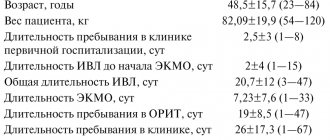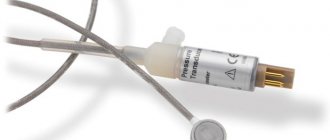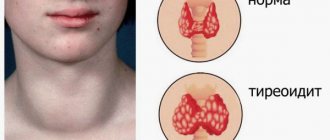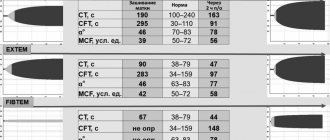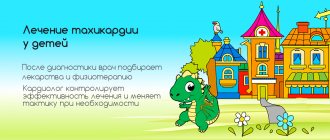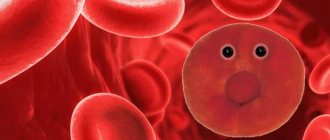Stroke in adults receives a lot of attention, but childhood strokes are also quite common. And if in adults this disease has a typical course, then in the case of children everything is much more complicated. It can be quite difficult for an untrained person to recognize the symptoms of a childhood stroke; they are often attributed to milder illnesses.
Features of strokes in children
A stroke is an acute disorder of blood flow to the brain that lasts more than 24 hours and results in damage to the central nervous system. Depending on the age of the child, there are two types of strokes:
- Perinatal stroke can develop during the period from the fifth month of the baby's intrauterine development to the first month of his life.
- A childhood stroke is one that occurs between the ages of one month and the child's adulthood.
It is also possible to distinguish two types of childhood strokes depending on the mechanism of their development.
- The development of ischemic stroke is provoked by an acute disruption of blood flow to the brain when it is insufficient or completely absent. Ischemic stroke is often associated with blood clots.
- Hemorrhagic stroke is much less common in children than ischemic stroke. It is associated with hemorrhage that occurs due to the rupture of a vessel and the interruption of blood supply to certain areas of the brain. The resulting hematoma begins to compress the vessels located nearby.
“You, mom, actually found something to tell!”
“I first searched for rehabilitation for Ilya on the Internet,” says Anna. – The free rehabilitation center offers five minutes of massage, that’s all. And we constantly need a massage therapist, a physical therapy teacher, and a speech therapist. After all, Ilya not only has to develop new skills, but he also has to maintain what he has.”
“I lift a stick, squat and can climb onto a step,” Ilya intervenes in a serious conversation with a journalist and pulls out a step platform from under the bed, as if for aerobics. - No problem!" But he immediately collapses: “That’s it, I can’t take it anymore, I’m tired.”
Anna says that Ilya started talking at the age of three, and started walking when he was three and a half. And yet, only recently have I started walking up the stairs like an adult, rather than putting both feet on each step like a toddler. But my left hand still doesn’t work at all.
There was a period when Ilya walked on his toes all the time.
The orthopedist even advised cutting his Achilles tendon, but in the end, mother and son strained his leg through training. They just deliberately stood with their legs supported and cried.
“On what other toes? You, mom, actually found something to tell, that’s when it happened!” – Ilya drawls, clearly repeating his father’s intonation. And then he pulls out a guitar and begins to sing, plucking the strings with one right hand.
“Okay, we have now found rehabilitation, which we have in Noginsk - “Development without barriers,” continues the mother. – What I like about them is that as a child, they finally began to study comprehensively. There was a period when it was actively growing. At this time we were developing the leg. Then the massage therapist worked on the hand, and at the same time the speech therapist gave us a letter. Ilya, of course, is lagging behind, but now he has begun to maintain his balance.”
Now the mother closely monitors her son’s activities. She also provides him with motivation. He may say, for example: “If you don’t do the exercises, you won’t watch the cartoon.” And Ilya tries, he does.
Causes of childhood strokes
The causes of stroke in an older child may also vary. The most common factors include vascular pathology of the brain and spinal cord. In general, there are several main causes of ischemic and hemorrhagic childhood strokes:
- defects and other heart diseases;
- blood clotting disorders, tendency to form blood clots;
- vasculitis;
- specific inflammations in the walls of the arteries (lupus erythematosus, Kawasaki disease, etc.);
- oncological diseases.
The risk of stroke in adolescents also increases in cases of drug abuse, in particular when taking psychostimulants (cocaine, amphetamine, etc.).
Varieties
Pediatric stroke, unlike that in adults, has 2 concepts:
- Perinatal. Develops between 28 weeks of pregnancy and 1 month of the child’s life.
- Children's. From 29 days of life to adulthood.
According to the mechanism of development, there are 2 types:
- ischemic;
- hemorrhagic.
There are two main types of stroke: ischemic and hemorrhagic.
Ischemic stroke develops as a result of an acute circulatory disorder; blood does not flow to the brain at all or does not flow in sufficient quantities. The hemorrhagic type is nothing more than hemorrhage and is less common than the ischemic type. A ruptured vessel stops the blood supply to a certain area of the brain, and the resulting hematoma compresses nearby vessels. Its cause, as a rule, is anomalies in the development of blood vessels, blood diseases, and head injuries. Symptoms and manifestations will depend on where the hemorrhage occurred: in the parenchyma (the brain itself), meninges or ventricles.
Risk factors in newborns
- Traumatic brain injury, cervical vertebrae injury.
- Sickle cell anemia, which is observed in black children, accordingly, the disease is more common in such children.
- Underdevelopment and blockage of blood vessels.
- Heart diseases, heart defects.
- Chickenpox. It has been proven that children who have had chickenpox are 3 times more likely to have a stroke.
- Leukemia.
One of the risk factors for stroke in newborns is perinatal head injury or birth injuries in the cervical spine.
Cerebral hemorrhage in newborns is more often associated with rapid labor, intrauterine growth retardation, ruptures of pathological anastomoses between the arteries and veins of the brain, and ruptures of pathological vasodilatations.
Ischemic strokes in children are associated with neuroinfections, encephalitis, meningitis, and are observed with congenital heart defects, compression of the vertebral artery, dehydration, increased blood clotting, and congenital narrowing of cerebral vessels (Moyamoya disease).
Risk factors in preschoolers
- Cerebral hemorrhage is associated with ruptures of pathological arterial-venous connections, with vasculitis of various origins, and blood clotting diseases.
- Ischemic stroke is observed in congenital heart defects, anomalies in the development of cerebral vessels, is associated with disseminated intravascular coagulation in oncology, specific inflammation in the arterial wall (Takayasu disease, Kawasaki disease, lupus erythematosus), with homocysteinemia, polycythemia, with injuries of the cervical spine, arterial hypertension.
In school-age children and adolescents, the risk of developing ischemic stroke increases with the use of cocaine, amphetamine, maninil poisoning, and isoniazid.
Symptoms of stroke in children
The difficulty of diagnosing perinatal strokes lies in the fact that during their development, the child, as a rule, does not have obvious symptoms, as is the case with older children. Signs of stroke in newborns are:
- breathing problems (apnea);
- lack of response to stimuli;
- convulsions;
- refusal to feed;
- violation of muscle tone.
Symptoms of childhood stroke at an older age:
- a sharp disturbance in the sensitivity of the face or limbs;
- immobility of half the face;
- sudden difficulties in understanding speech and pronouncing words;
- spontaneous impairment or loss of vision;
- feeling of double vision;
- acute headaches;
- dizziness, problems with maintaining balance and orientation in space;
- feeling of weakness in the limbs;
- temporary loss of control over urination and bowel movements.
Important! If a child experiences these symptoms, parents should urgently call an ambulance.
If a stroke is suspected, the doctor conducts tests such as MRI, CT, contrast radiography, intracranial ultrasound, and also takes blood tests from the child. In cases of hemorrhagic stroke, a spinal tap may also be required.
First aid for stroke
First aid for a stroke at home is measures aimed at alleviating the condition before the arrival of emergency medical services.
The algorithm of actions for providing first aid for a stroke is as follows:
- call an ambulance at home, indicate the address in detail, describe the manifestations, be sure to inform that a neurological team is needed;
- provide access to fresh air;
- unbutton clothes that are constricting your throat;
- if vomiting begins, you should turn your head to the side so that the person does not choke;
- during a convulsive attack, you need to make sure that the tongue does not sink in, otherwise the person will not be able to breathe. You can place a tablespoon wrapped in cloth several times between your teeth. If the tongue is stuck and blocks the larynx, you should take a handkerchief, hold the tip of the tongue with the handkerchief and pull it out;
- If you have a severe headache, you can apply ice to your head and wrap the ice pack in a thin towel.
Providing first aid for a stroke before the ambulance arrives does not include taking any medications. You should not give something that other family members, neighbors or colleagues accept. Each medicine has contraindications and can worsen the victim's condition.
Micro-strokes deserve special attention. A person may experience numbness or awkwardness in the hand, slurred speech, or dizziness for a few minutes, after which the symptoms disappear without a trace. The first thought is that progression has been avoided and you can calm down. This is the most common and serious mistake.
Transient ischemic attack (TIA), which is popularly called a microstroke, is considered a harbinger of a future vascular accident. This condition requires the most thorough and rapid examination, since the compensatory capabilities of the body are practically exhausted. Blood flow disorder always occurs for a specific reason: untreated arterial hypertension, heart rhythm disturbances, metabolic (metabolic disorder) failures, advanced atherosclerosis. First aid for a cerebral stroke, even a temporary one, is to establish the exact cause of the disease.
In the vast majority of cases, doctors manage to stop the course of the disease and prevent disability, but only if treatment is started on time, even before the blood flow is completely disrupted.
Possible consequences
Stroke in children often leads to permanent disability. Deaths are also possible. The severity of the consequences is influenced by factors such as the age of the child, the type of stroke, its location, and the timeliness of medical care.
After a hemorrhagic stroke, complete recovery of a child is often difficult to achieve. Treatment of hemorrhagic strokes is usually carried out by pediatric neurologists together with neurosurgeons. A more favorable prognosis is observed for ischemic strokes .
Perinatal stroke can cause motor impairment, delayed mental and speech development of the baby, mental retardation, and cerebral palsy. Childhood stroke , suffered at a later age, can cause movement disorders, as well as disturbances in various mental functions (speech, thinking, memory, perception and attention).
The fight for knowledge
It’s still not easy for Ilya to study. At nine years old, he is in first grade, mastering the eighth grade program. True, from home.
“The correctional school is located fifteen kilometers from home. There are fifteen people in the class. When we started studying, Ilya could sit quietly for about twenty minutes. Now, according to the teacher, he can endure a lesson for forty minutes. But there are three lessons at school. That's why I haven't decided to send him to class yet. The teacher comes to our house,” Anna clarifies.
“Teacher Anastasia Alexandrovna,” Ilya adds busily. – We read and write with her. Have you seen the series “Dog”?”
Ilya masters the educational material unevenly. Mathematics goes back and forth, writing and reading are worse, but he can’t even see a textbook on the world around him, he doesn’t like this subject so much. The seasons are difficult for him, he doesn’t recognize animals well – maybe that’s why he doesn’t like this subject.
The family's plans for Ilya's future are modest.
“I certainly don’t hope that he will graduate from college. I would be able to read, count and look after myself. But you can’t imagine how responsive and grateful he is.”
Rehabilitation of a child after a stroke
A stroke suffered at an early age, when the nervous system is still actively developing, can have significant negative consequences for the further development of the child. According to statistics, approximately 70% of children who have had a stroke subsequently have permanent neurological disorders. That is why it is necessary to take a responsible approach to the child’s rehabilitation process.
As a rule, rehabilitation is carried out by a neurologist together with psychologists, speech therapists, massage therapists and other specialists. It includes many procedures aimed at the comprehensive recovery of children after an illness. In order for a child to have a greater chance of recovery, not only high-quality medical care is important, but also attention to him from the parents.
Ilya lived in the hospital until he was eight months old.
Ilya was born with bilateral pneumonia.
Three days before the birth, the mother caught ARVI somewhere, so, as soon as he was born, the baby went to the pediatric intensive care unit. A month later, when mother and son were about to be discharged to their father and older sister, who were waiting at home, a new problem was discovered - kidneys. Some doctors said that it was congenital, others that the complication arose from the way the lungs were treated. Anna herself recalls that part of the pregnancy occurred during the summer smog of 2010, although everything was fine at all screenings.
“It was with my eldest daughter that I was in conservancy,” says Anya. – And here it’s a normal pregnancy, nothing unusual on any ultrasound. And suddenly…"
Neurologist, medical expert of the ORBI Foundation
Natalya Koryavtseva : Ilya Barankov’s stroke occurred against the background of kidney problems.
It can be assumed that impaired renal function led to increased blood pressure, which, in turn, triggered a stroke. Polycystic kidney disease is a congenital genetic pathology; this disease cannot be acquired. Moreover, polycystic disease has numerous forms and varying degrees of severity. In particularly striking cases, the child’s kidneys no longer work in utero. Theoretically, a transplant is possible in this case. However, there are also forms of polycystic disease that, being congenital, are asymptomatic until 30-40 years of age. Moreover, until the disease manifests itself, doctors do not even notice it. Then mother and son, residents of Noginsk near Moscow, were taken to hospitals. In the end, they ended up in Moscow, in the hospital of St. Vladimir. Ilya, whose kidneys were almost not working, was connected to a peritoneal dialysis machine. For young children, whose blood vessels are still very fragile, this procedure replaces conventional hemodialysis.
It became clear that Ilya’s only chance for life was a kidney transplant. The only doctor in Russia who could perform such an operation on a very small child was Mikhail Kaabak, a wonderful doctor with golden hands and a heart, head of the department of organ transplantation for children at the National Medical Research Center for Children's Health of the Russian Ministry of Health. But in order to get to the operating table, the baby had to not only wait for a donor, but also gain weight up to seven kilograms. But I didn’t want to gain weight.
“Until Ilya was eight months old, we lived in the hospital. We were sometimes discharged for a week. My daughter was with her grandmother and father all this time and was very bored,” recalls Anya. “Then we were discharged completely, with a bunch of medications and instructions on how and what to do, but at home it was more difficult. Ilya ate poorly, did not develop at all - did not smile, did not sit, did not know how to roll over. We measured his blood pressure all the time. Living in constant uncertainty was very difficult.”

